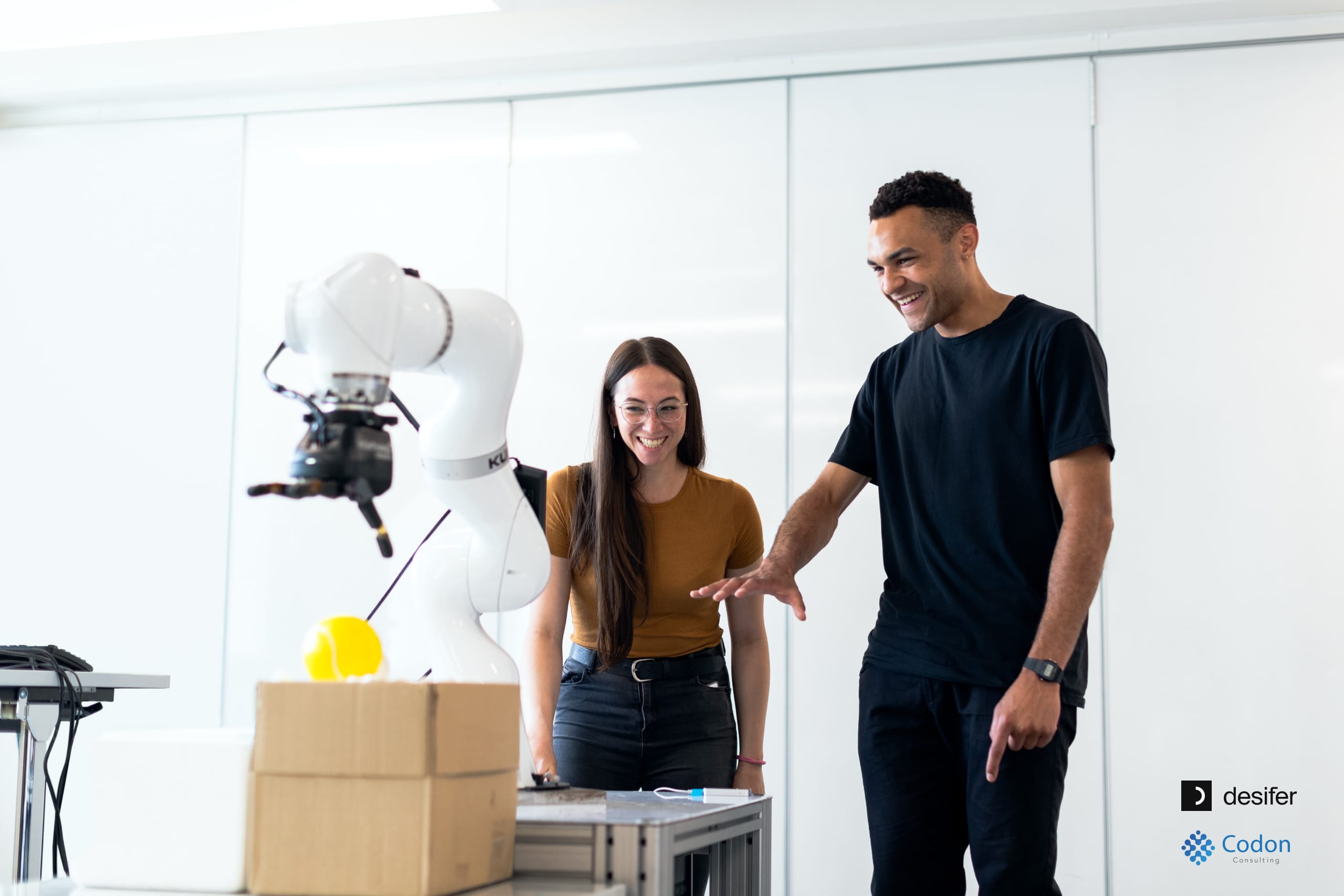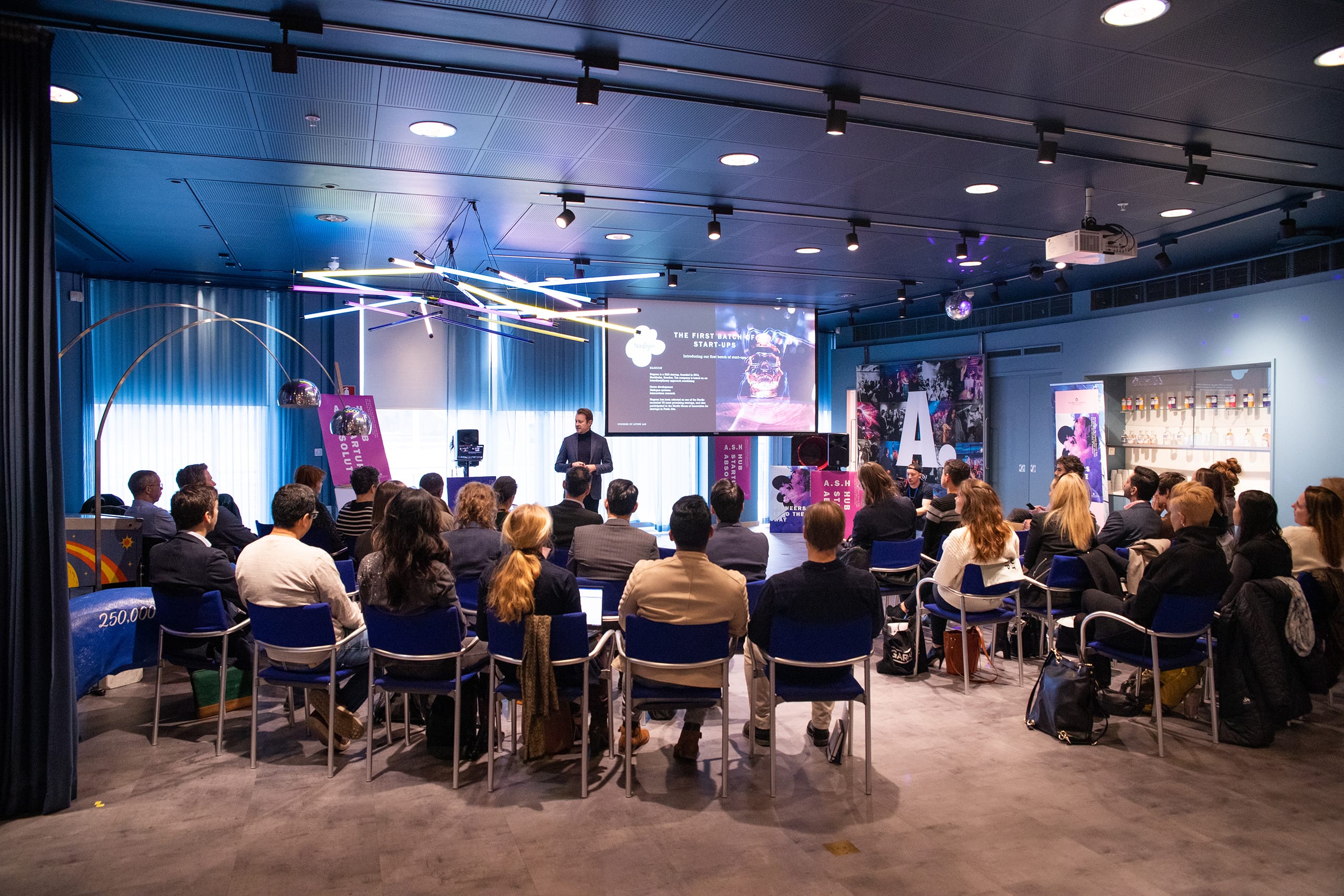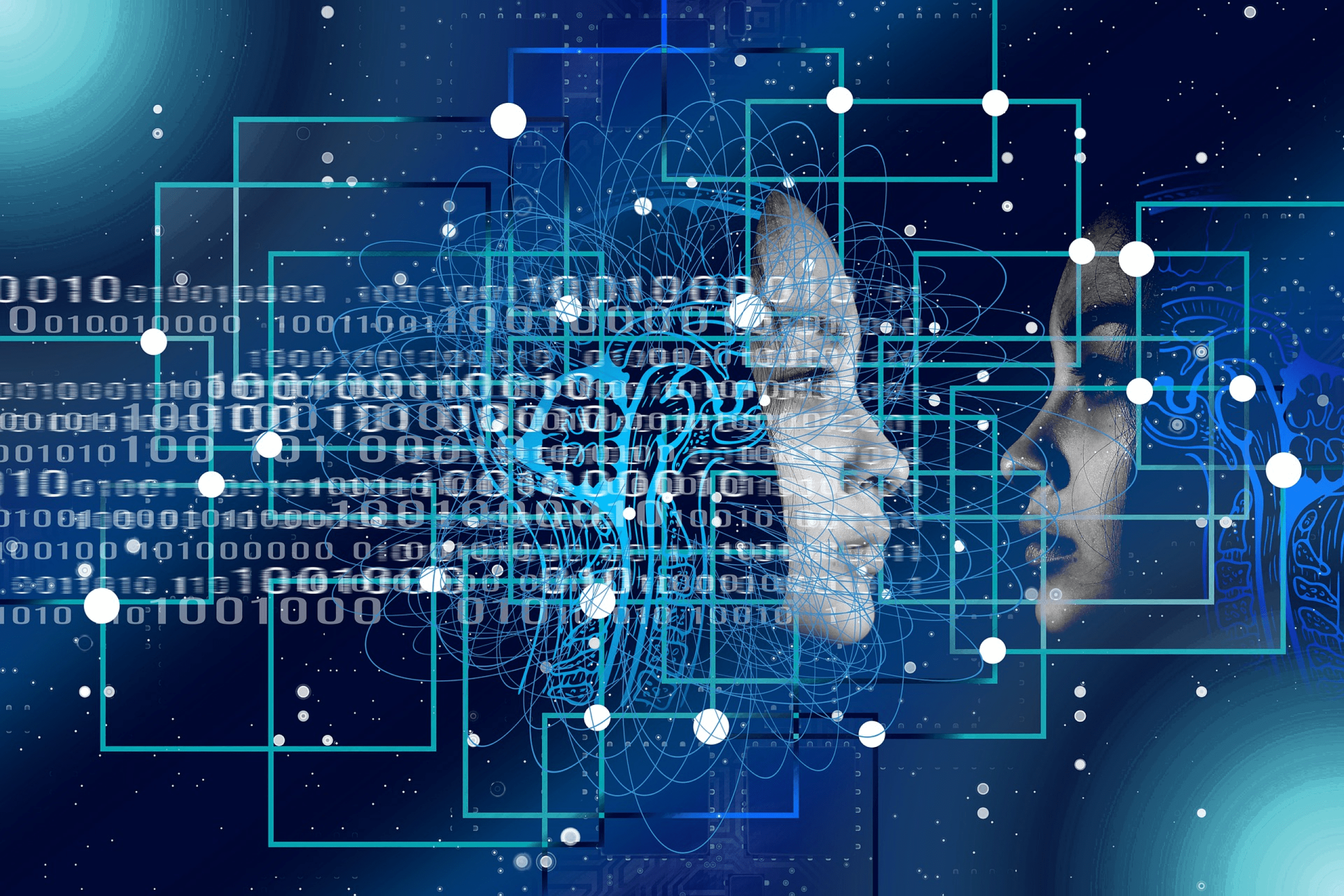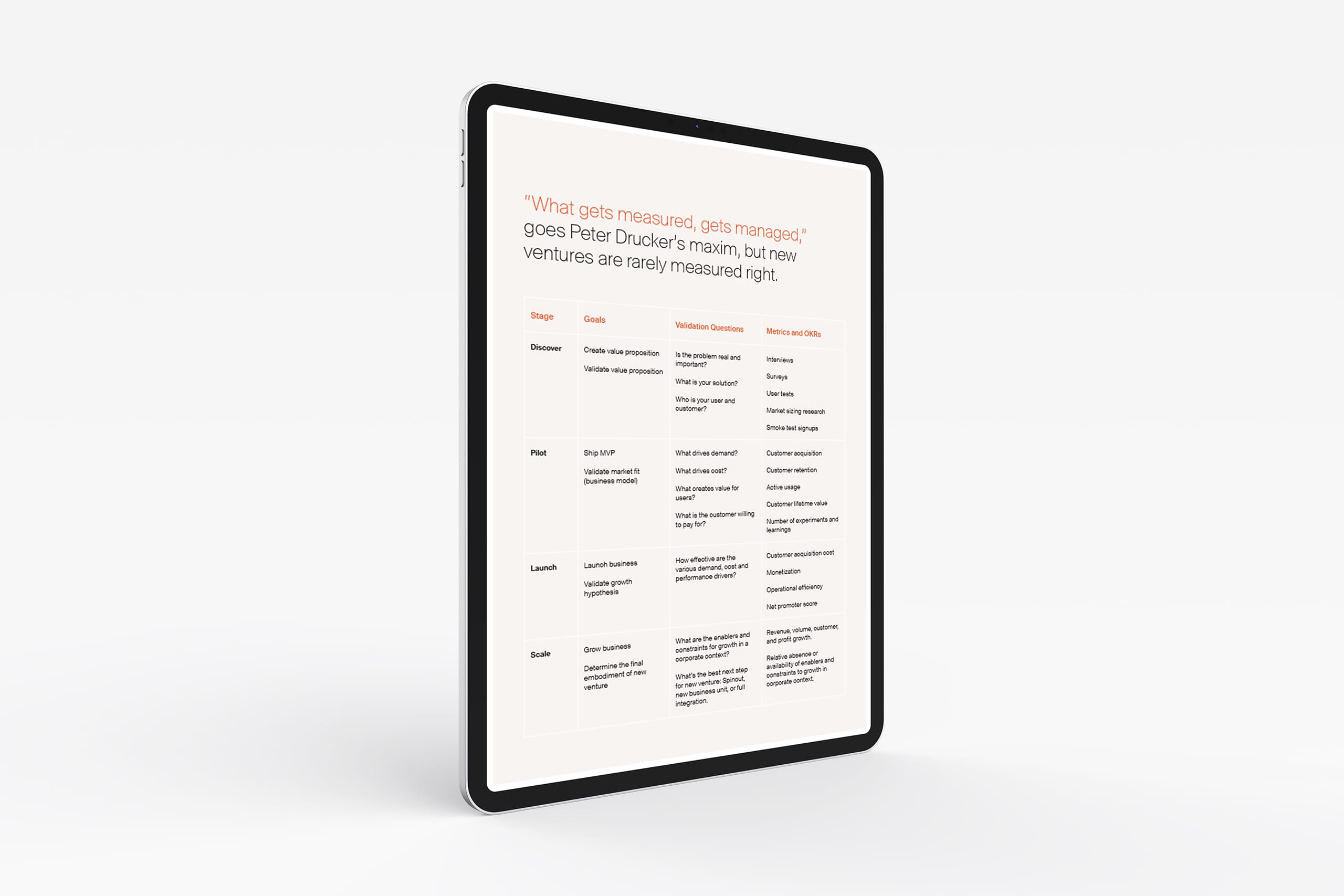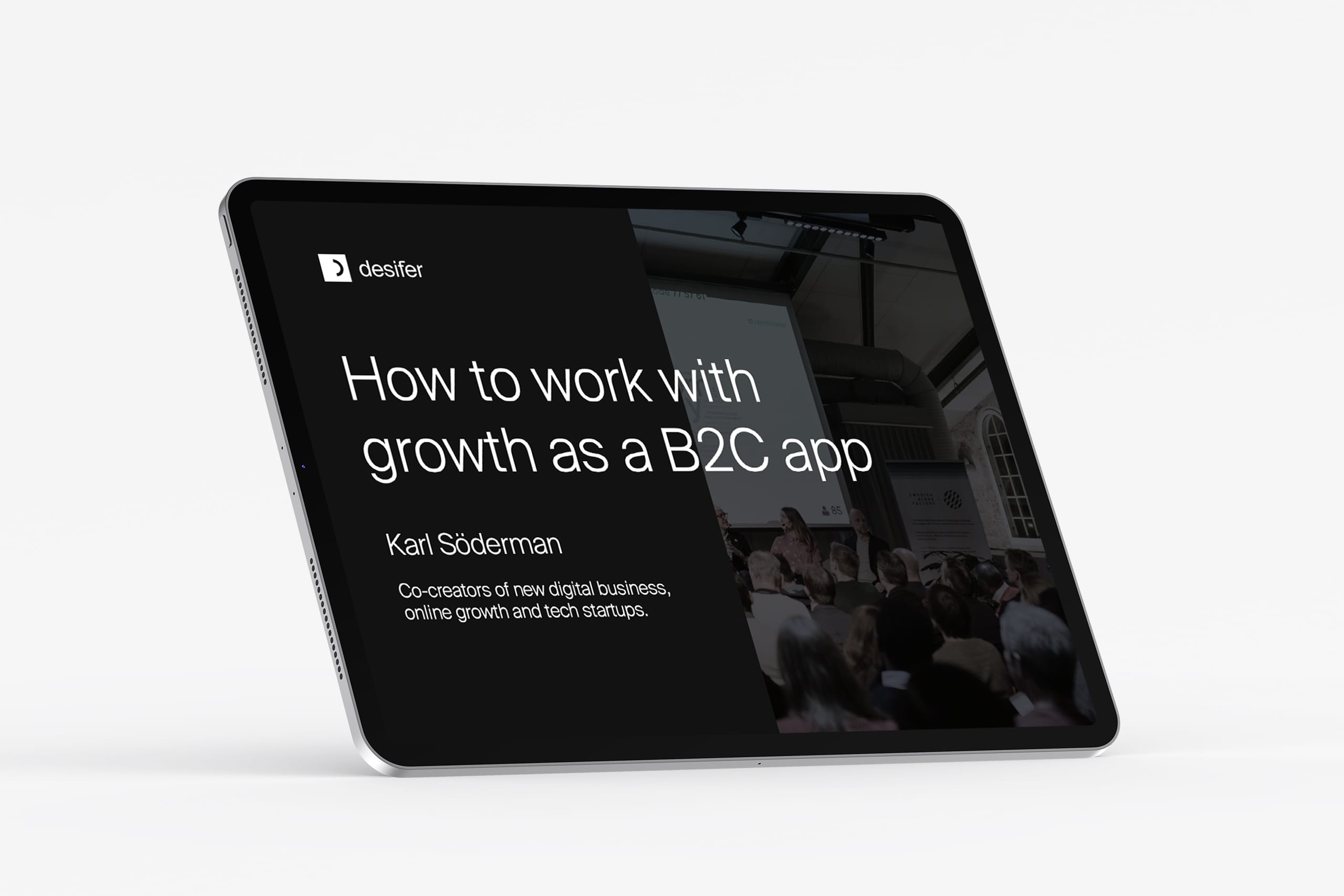Product | Technology
Written by Per Nystedt
February 16, 2023
Automated Product Market Fit in the Age of AI – The business opportunity, risk and responsibilities
Product market fit is a vital concept in the business world, and it is at the core of what we at Desifer help our customers with. It represents the alignment of a product or service with the needs and wants of its target market. It is the key to a successful product launch, and the foundation of long-term growth and profitability. However, in today’s highly competitive and rapidly changing landscape, product market fit is becoming increasingly challenging to achieve and maintain. AI is transforming the way businesses operate and compete, and it has the potential to revolutionize how businesses reach and maintain product market fit.
In this article, we will explore how AI can be used to fully automate the way product market fit is reached and maintained, and the opportunities, challenges and risks it presents. To do so, we will look at the Chinese-based online fashion retailer Shein and see how close they are, and what is left, to have achieved full automation of reaching product market fit. We will also examine the role of various stakeholders, from government regulators to industry leaders, and from consumers to AI ethicists. We will consider who (or what) is in control and what’s at stake.
Automated Product Market Fit, what does it even mean?
At the time of writing this article, Googling “automated product market fit” results in exactly zero relevant results on the topic. So, how would we define automated product market fit?
The expression “product market fit” consists of two different concepts, the “product”, and the “market”, and it states that there should be a fit in-between them. It’s worth noticing that it does not explicitly state that it is the product that should be fitted to the market; it could very well be the reverse (market fitted towards a product), or more realistically, a result of both product and market evolving together in what might be described as a dance between them. (Remark: We use the broader definition of “product” that includes the 4Ps, Product, Price, Place, and Promotion, since they all need to be fitted to the market).
Automated product market fit refers to an automatic process that maximizes market success and profitability through the use of automatically collected data and AI techniques across the entire product innovation/design process, all the way down to marketing tactics and operations. To continue using the dance metaphor from the section above, the supply side becomes an AI-optimized dance partner that is a perfect match for each and everyone of its customers on the market side.
Fashion retailer Shein is leading the way
In an article in tech publication Techonomy, Molly Miao, the CMO of Shein wrote: “In a perfect world, fashion companies should be able to offer customers close to infinite style options (whether it be the latest trends or classic looks). That could meet individual preference, producing each style per single piece only, while reducing the burden on our environment. It would then replenish each piece sold–in a moment’s time–for the next customer. At SHEIN, we are dedicated to making long-term improvements on these three steps while moving, over time, toward this ideal model.”
Having read Molly Miao’s vision, one can start questioning if the concept of “product market fit” is even relevant anymore. What Molly Miao is describing can perhaps be better described as “unlimited consumer options”. But one quickly realizes that no consumer would like to browse through an infinite number of options to find what they want. Rather, they would want to select between a few options that were tailored to align with their preferences, and then we are back to product market fit, but in a more personalized version, where the market in each instance is the specific consumer.
In this vision, the supply side has no say in what is to be produced. This may feel strange and questionable to some people. But really, in a fully data driven market economy, who is in-fact in charge? In the expression ”product market fit” there is nothing about the preferences of the designers or the company producing the services or products.

What kind of company is Shein and how close have they come to Molly Miao’s vision?
Shein is a Chinese-based online fashion retailer that has disrupted the fashion industry with its innovative business model that combines artificial intelligence, data analytics, and social media to stay ahead of trends and offer customers the latest fashion products at an affordable price point.
Its real-time fashion AI system uses search and social media behavior of its target audience to generate product ideas, which are then passed to an 800-strong team of internal designers to produce clothing items. Each day hundreds or even thousands of new items are finished by the design team and these designs are automatically sent to suppliers through Shein’s central enterprise resource planning (ERP) system, ready to be manufactured and sold in limited numbers. If the items are popular, the order volume for manufacturing increases, automatically and in real time, through the ERP. This real-time model cuts the time it takes for a new product to hit the shelves dramatically, allowing Shein to stay ahead of trends and keep its customers engaged. Shein also makes use of AI applied to customer behavior data to create a highly personalized customer experience, helping customers find what they want.
In Shein’s setup we see that it is no longer the design team within Shein that drives the fashion trends, but instead it is the consumers themselves. We also see that AI and automation is already doing most of the work. It analyzes trends, creates product ideas, sets prices, and optimizes manufacturing volumes. Essentially, it is only the 800-strong design team, and a marketing team that takes photos of the new items and writes advertising copy, that is involved in the design process that is aiming to produce fashion that is market fit.
What if the design team was replaced by an AI that automatically generates blueprints ready to be sent to the manufacturer. And what if the marketing team was also replaced by an AI that automatically generates product descriptions, ad copy and glossy product pictures? Shein could then start selling endless variations of personalized products that are not yet manufactured, just as Molly Miao seems to aim for.
Are we there yet? – Generative Artificial Intelligence
No one has missed the hype around ChatGPT, GPT-3, Dalle 2 and Midjourney. Some of you have probably already tried one or some of them to generate images and text. Those are perhaps the most well-known Generative Artificial Intelligence (Gen-AI) systems, but there are Gen-AI systems for all kinds of outputs, not only images and text, but also videos, 3D models, voice, and music. Based on input parameters, these Gen-AI systems are able to rapidly generate vast amounts of new and original content, at a very low cost.
The quality of the output of these systems is getting better by the hour, as these systems learn from their users what they expect and prefer. Already now, image-based Gen-AI systems can create photorealistic fashion items that are good enough for marketing purposes. And there are systems that can create 3D models and blueprints for manufacturing. What seems to be lacking is the way to align these systems so that the blueprints and the market materials depict the same fashion item. Basically these Gen-AI systems have only a few iterations left until Shein can automate the entire process from consumer driven design, manufacturing to the shopping experience.
What are the opportunities of Automated Product Market Fit?
Personalized designs that are more inclusive and diverse
The use of Gen-AI for fashion design can personalize designs for different target demographics and cultures. By continuously updating the Gen-AI model to fit customer data such as different body types, sizes, and abilities, age, gender, location, and purchasing behavior, the Gen-AI model can generate designs that are tailored to any combination of traits. For example, the model can generate designs that are suitable for an old customer with a certain body constitution, living in a certain region that likes certain colors and patterns. This will increase customer engagement, loyalty and satisfaction and will be perceived as socially responsible.
Increased efficiency in product development
Manufacturing only what is purchased, rather than manufacturing fashion items in the hope that they will be purchased, will increase efficiency tremendously. The cost of unsold items will be reduced to a minimum, only including items that are returned by customers. This is further beneficial from an environmental perspective as the vast amount of unsold items is one of the major environmental concerns in the fashion industry today. Surely, the AIs that produce the market materials and the fashion physical items can also be trained on customer returns data to optimize its output to reduce the number of returned items as well, however, this might not actually result in cost reduction in the final analysis. The Gen-AI can also be trained to optimize designs to reduce manufacturing costs, both when it comes to material costs and manufacturing machinery utilization.
Laying off the design team and the marketing team will reduce the workforce needed and hence lower labor costs. This hot topic of AI stealing jobs is also a potential risk, which is further discussed in one of the sections below.
Environmentally (un)sustainable
On the one hand one can argue that manufacturing only purchased items using less resources is a much more sustainable way of working compared to how the fashion industry operates today, where unsold items often end up as landfill or are burnt straight away rather than going to second hand or being recycled. On the other hand, whoever is in charge of deciding what the model should optimize towards, may decide to optimize for maximum company revenue only. This could lead to over consumption of fashion, which would increase already tremendous amounts of clothing waste, and all sorts of other issues. The question is then whether you can say that it is in-fact environmentally sustainable.
Faster than competitors
What could possibly be faster than being able to produce purchasable products in real time, based on the latest trends available and the personal preferences of the specific customer, even before you’ve manufactured them? Surely this is a competitive advantage for any company that can pull it off.

The risks of Automated Product Market Fit
While AI can bring many benefits to the race for product market fit, it also poses a number of risks that must be considered.
Job loss
Automation of the entire product design process will lead to the displacement of human workers working along the product design process. The risks associated with job loss at a larger scale are to be found at many different levels. They stretch all the way from the psychological risks for the individual that is being rendered useless while being replaced by an AI, to how culture, norms and the economic system will need to adapt to a situation in which many people will not produce value in the traditional sense.
Not everyone believes that AI will ever be able to, or allowed to, fully replace human workers, but rather that AI will remain tools for humans to use. In that case (and in any case short term), re-skilling and up-skilling of the workforce will be necessary. Overall, this is a topic way too big and too complex to cover fully in this article.
Privacy concerns and data security
Privacy concerns and data security are increasingly important issues as AI systems become more widely used in the services we use. These systems are designed to process vast amounts of data in order to provide accurate and personalized results. However, this data often contains sensitive information about individuals, such as their personal preferences, financial details, and sometimes even health-related records. If this data is not handled properly, it can be misused for malicious purposes, such as identity theft, fraud, or even cyberattacks.
Businesses must take steps to protect this data by implementing robust security measures, such as encryption, firewalls, and access controls. They must also ensure that the data is collected and stored in compliance with privacy regulations, such as the European Union’s General Data Protection Regulation (GDPR) or the California Consumer Privacy Act (CCPA). In addition, businesses must be transparent about how they use the data, and allow individuals to control how their information is processed and shared. In the case of Shein, no one outside of Shein really knows what measures they take to handle the data that they process. It is likely that they optimize their efforts to maximize revenue and growth rather than abiding by EU or US regulations.
Fragmentation of society
It’s important to note that the preferences of consumers are not always rational or objective, and that they change over time. They can be influenced by emotions, cultural values, and personal biases. The motivation behind consuming is not just the satisfaction of basic needs or wants, it’s also about self-expression and self-identification. People consume products and services to express their identity and values, to connect with others and to be part of a community.
An automated personalized “product market fit” creating products and services that are specifically tailored to each individual’s preferences, is handing over the design from the design team to the consumer, even though the consumer is not actively taking part in the design process. This can be seen as a positive development, because it allows the consumer to get fashion that resonates with him or her on a deep level, and can help them to express themselves in new and exciting ways. However, it can also lead to a fragmentation of society and the creation of “echo chambers” in which products are produced for individuals to meet their existing beliefs and attitudes. This can result in unethical products and services that dehumanize certain groups of people, such as those based on race, gender, or socioeconomic status. An example in the case of fashion would be if the Gen-AI produced fashion items depicting antisemitic symbols.
In a fully automated system optimized to sell whatever the individual customer is likely to buy, who is there to take on the ethical responsibility for the designs and the accompanying selling descriptions? No single person will be able to see the full inventory, due to the fully personalized shopping experience. Not even the company selling the products will be able to monitor the full inventory. In supply and demand models where the supply side actually takes part in the creative process of the supplied services or products, the supply side will be held responsible for everything the customers experience along the shopping experience and the encounter with the sold products or services.
Most of us remember when the global fashion retailer H&M had to publicly apologize, after it was accused of being racist for using an african-american child to model a sweatshirt with the text “coolest monkey in the jungle”. Who is to blame if the same sweatshirt is sold as a result of a fully automated “market fit” based on the preferences of the specific buying customer only? There is a major risk that under the influence of systems optimized to sell lifestyle and culture-related products or services, we as consumers will have an even harder time aligning our ethical stances, higher order values, or our culture within society. It is possible (or even likely) that these can be hijacked by our own basic short-term instincts and desires.
Risk of dependence on technology and potential for malfunction
Businesses that rely heavily on automated product market fit may become dependent on the technology, which can leave them vulnerable to system failures, cyberattacks, or other forms of disruption. Furthermore, AI systems are not infallible and can make mistakes, which can have serious consequences for businesses and customers.
Note that the dependence on technology is not a new phenomenon. We have always made ourselves dependent on technology that we’ve started using; clothes, electricity and cars are some examples. These dependencies affect not only companies but also each and everyone of us as individuals. The brain is plastic and loses capabilities as we outsource its tasks to the tools around us. Most of us who have been using a calendar for a long time now have a hard time remembering the what, when, and where that fills up the calendar. If we start to rely too much on AI doing the creative work for us, will we lose our ability to be creative?

Who is responsible for mitigating societal risks?
As AI technology continues to impact the way companies approach the market and how they reach product market fit, it is important to consider the role of various stakeholders in shaping the future of this phenomenon. These include government regulators, industry leaders, consumers, and AI ethicists.
The government
Government regulators play a crucial role in ensuring that AI assisted or automated product market fit is developed and used in a responsible and ethical manner. They are responsible for establishing laws and regulations to protect privacy, prevent discrimination, and promote transparency in the use of AI. Additionally, governments can also invest in research and development to advance the field of AI and support the responsible use of the technology. It’s important to note, however, that not all governments share the same view on responsibilities. In the case of Shein, they will have to answer to the Chinese government for their utilization of AI. China’s Government’s official view on its responsibilities, which may come as a surprise (or not), can be found here.
The industry
Industry leaders also have a significant role to play in shaping the future of product market fit in the age of AI and the impact it will have. They can set standards for responsible and ethical AI use, invest in research and development, and advocate for policies that promote the responsible use of AI. Furthermore, industry leaders can also invest in worker retraining programs and diversify revenue streams to mitigate the risks of AI-based automated product market fit. However, as competition between multinational companies intensifies, one should not forget that revenue may be the top priority for most of these companies, and if it is not, they may not be able to survive.
The consumers
Consumers also have a responsibility when it comes to the impact of product market fit in the age of AI. As consumers/customers are in fact the “market” in the expression “product market fit”, they will be the judges of what is fit or not. Through their purchasing decisions they are part of the evolutionary process of product and service development, and because of that, the evolution of human culture and value systems. It’s essential to recognize that consumption should not be seen as a simple process of choosing what is most pleasing to the senses, but rather as a way of creating meaning, identity and to contribute to the evolution of human society. As consumers, we must be conscious of how we consume and what we choose to support. Besides being responsible when it comes to purchasing decisions, consumers can also influence the direction of the industry by raising awareness of issues such as privacy, bias, and discrimination, and by supporting companies that prioritize responsible and ethical AI use.
AI ethicists
AI ethicists are professionals who specialize in the ethical considerations surrounding the development and use of AI technology. They play a crucial role in ensuring that AI is created and utilized in a way that is not only technically sound, but also ethically responsible. This involves evaluating the potential impacts of AI systems on society and individuals, and creating codes of conduct for AI developers, offering training and resources for organizations using AI, or advising on ethical decision-making in the development of AI systems.
Where do we go from here?
We live in exciting times, or frightening, depending on who you ask. Regardless of who you are – a member of the government, the industry or a consumer – your actions will affect the route we take into the future. AI and perhaps more specifically Gen-AI has the potential to revolutionize the way new products and services are created. We see companies like Shein getting closer to fully automating the creation of personalized products to reach a perfect market fit for each and every customer individually. This may sound like a dream come true if you believe in a free market economy, but we need to think while we still have time to do so. There are important questions that need to be considered concerning fully automating the product market fit process.
Are we ready to recognize that consumption is not merely a simple process of choosing what is most pleasing to the senses, but rather a way of creating meaning, identity and a way to contribute to the evolution of human society? Can we and should we trust that consumers alone, under the influence of systems optimized to sell, are able to take on responsibility for the road ahead, and “be careful what they wish for” since automated product market fit will make just about anything come true, sometimes to the detriment of social sustainability or other fundamental human values?
Or… Will the governments, industry leaders and ethicists work things out, so that consumers can indulge in products and services that fulfill their deepest desires, wants and needs without concern for anyone else than themselves?
What about the creative jobs within the product development process, are they at risk? If not, and if AI is used simply as a tool to assist human workers, will our own creative abilities suffer just as our memory has declined with the use of memory aids such as calendars and notebooks?
Clearly, there are many questions that need to be addressed. As providers of innovation services in this and other industries, we feel obliged to work together with other stakeholders to ensure that AI is developed and used in a responsible and ethical manner. With this article, we are taking the first step to initiate a dialogue with you and other influential individuals. What will you do?













